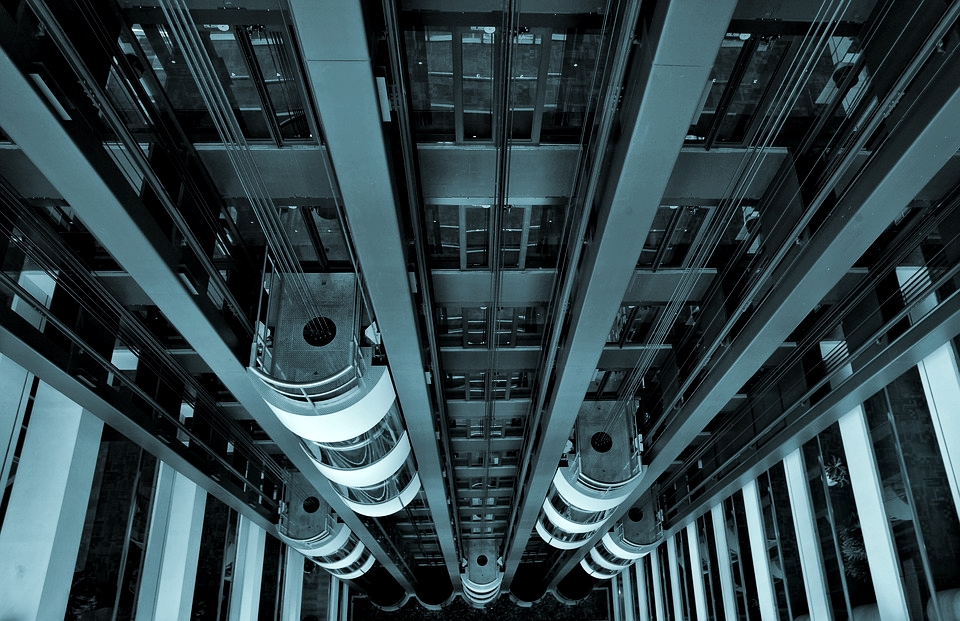The very first elevator for the use of passengers, installed at a departmental store known as Haughwout in New York City, was not very popular with customers. It was designed in the year 1857 and was shut down in about three years period as people did not accept or use it. In the history of elevators, it was a dull start, to begin with. The 1857 model elevator was indeed a slow machine that travelled just 40 feet in a minute.

The Fascinating History of Elevators
During the 19th century, elevators were just a device that attracted customers and tourists, it was hardly used as a convenient means of transportation. In those days, there were hardly any tall buildings and people preferred to buy or rent lower floor apartments that required less climbing. Even supermarkets and departmental stores were mostly on the ground level. The higher the flats or apartments, the lower was the rent charges.
The concept of using elevators changed everything. With the advent of skyscrapers and mega shopping malls with four or five storeys, people began to accept the elevators as a handy mode of transportation.
Even though mechanized hoisting machines similar to elevators existed from the early 1800s, elevators that were used exclusively to carry people from one floor to the other was acknowledged only in the 1850s decade. Safety of the passengers was the first concern. There was a live demonstration in 1854 when industrialist Mr. Elisha Otis showed how the descent of the elevator was halted immediately if the ropes supporting the cable snapped.
The Otis Elevator Company
The public demonstration did escalate the sales of elevators manufactured by the Otis Elevator Company. Today, Otis is the biggest manufacturers for making vertical elevators. The plus point was the safety feature that motivated the general public to use and accept Otis Elevators. The first ever patent for vertical railway was put in by an engineer called Otis Tufts in the year 1859, that included a car with seating facility.
Ascending Rooms Cost Factor
Initially, elevators didn’t make brisk business as they were very expensive. They were termed as luxury item used in hotels of London, Paris and New York. With exotically designed rooms, furnished seating and even mirrors and chandeliers, they were called omnibus upstairs or ascending rooms.
The first elevator standard models were all power-driven by steam engines. Steam engines made them slow. After the elevator operator closed the door, the elevator car would rise up at a very slow pace. But, even this was a novel experience for people as they could avoid using the stairs.
Evolution of Modern Cities
Elevators evolved due to modernization. This began in the 1870s decade. With many office building mushrooming in cities like Manhattan, hydraulic elevators were introduced. The 8 storey Equitable Life Building had elevators specially built by Otis Elevator Company using hydraulics technology. The shift from luxury hotels to commercial structures was the main reason that the steam engine elevators were replaced by faster-moving hydraulic elevators.
Salient Features of Hydraulic Elevators
-
They were very fast, much faster than steam engine elevators
-
They were easier to keep or maintain
-
They helped set a standard response time for all elevators that is not more than thirty seconds.
-
Elevator shafts gained a permanent place in the architectural designs for all skyscrapers
Penthouse Elevator Design
Technology had improved vastly in the 20th century. Famous architects such as Emery Roth started using the space directly below the roof and designed them into terrace apartments called penthouses. These penthouses were built on the very last floor and elevators became an integral part of their design. Elevators become an indispensable part of any high-rise building or skyscrapers. The Empire State Building inaugurated in the year 1931 had seventy-three elevators that operated at an amazing speed of 1200 ft. per sixty seconds (one minute). Elevators are an essential part of the impressive building to this date.
21st Century Elevators
The fastest elevator in the world is put up at the Shanghai Tower, China. It travels at an amazing speed of 67 ft. per second. The lifts zoom from zero floors to the 95th floor at an unbelievable speed of 45 seconds. The engineering of an elevator is really complex nowadays. Burj Kalifa, the tallest building in the globe has a total of 57 elevators, all are designed to serve as express lines to cater to individual sections of the tower.
For designing lifts or elevators for the future tallest skyscraper ‘The Kingdom Tower’ to be made in Jeddah, Saudi Arabia has roped in Kone Elevators for making a unique and record-breaking elevator shaft. The cables are said to be made of carbon fibre for light-weight design.
Elevators are much safer than slow-moving escalators. And you can also avoid tiring your legs climbing stairs. However, one should exercise caution while operating or handling elevators. Most accidents happen during the installation stage or when repair work is carried out by workers.